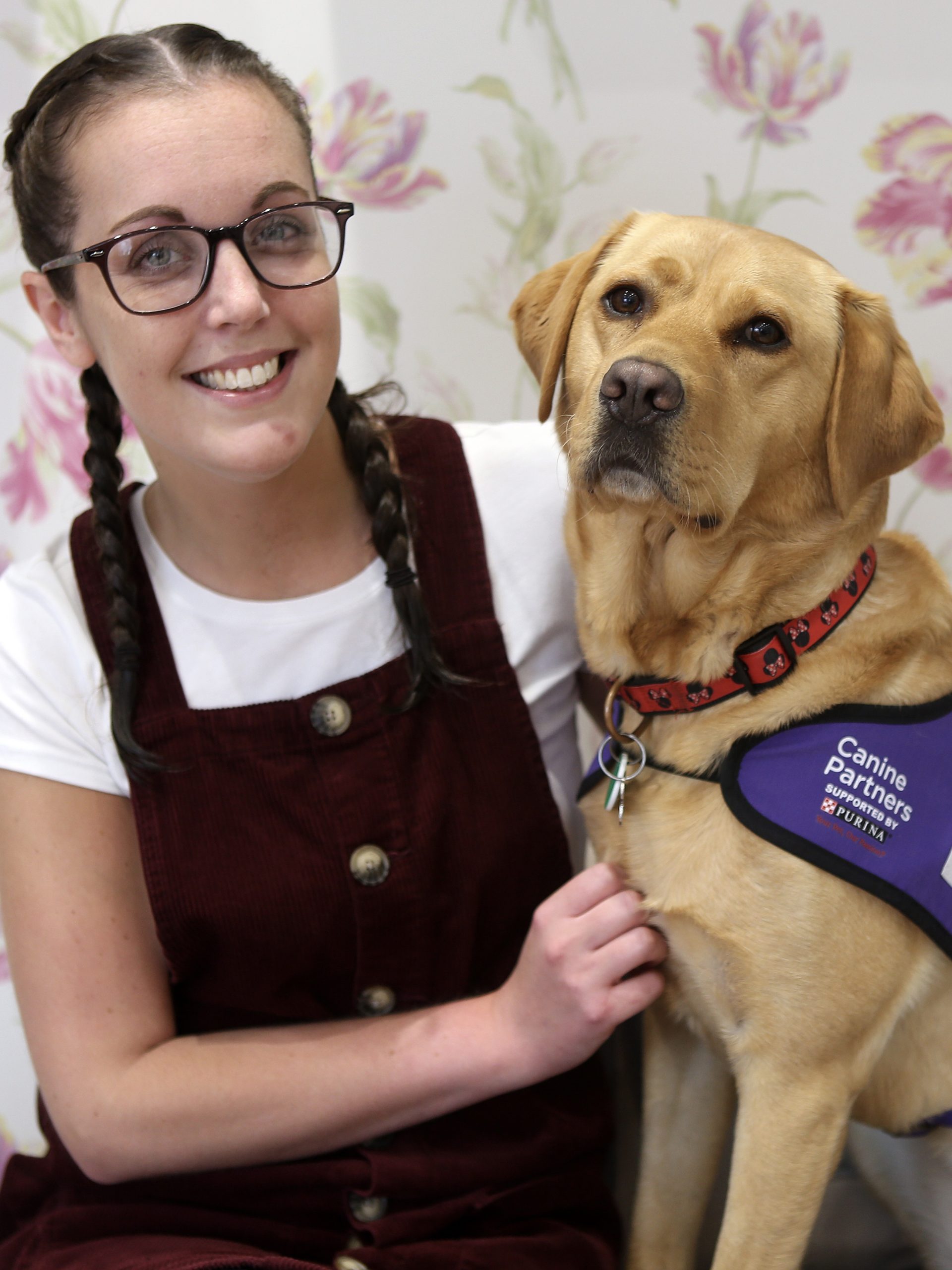
* This post is kindly sponsored by the companies listed at the end of this post, but all opinions are my own. *
Travelling with a disability is not easy, especially when you rely on the professionals for support both in the airport and on board the plane! Therefore, I wanted to use this sponsored series of disability-related travel tips to share my thoughts, opinions, and experiences in the hope that it gives someone else the confidence to travel! However, I wasn't always the best person to answer some of the questions people have been submitting throughout this series, so decided to set up a question and answer session with someone who works for an international airline! Meaning whether you're a first-time flyer or a keen traveller, you will hopefully learn something new from this post!
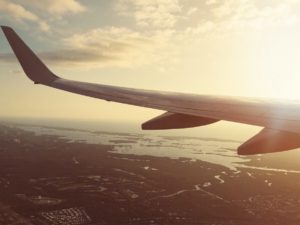
There is no specific training on this subject, but we are taught to be accommodating, considerate and subtle when offering assistance, especially with passengers wanting to avoid attention being drawn towards their needs. Although I can confidently say that I have gained the most experience from serving passengers of all abilities at 35,000 feet! Allowing me to follow a passenger's lead and/or preferences, offer my support and let passengers know they can attract my attention at any time during the flight. In addition to this, the new Hidden Disabilities Sunflower Lanyard allows us to identify and assist passengers who may not have a visible disability, meaning we should have more happy passengers disembarking the aircraft at the end of the flight!
I obviously cannot comment on other companies, but I am aware that my airline has been striving to implement several changes in recent years to ensure passengers with disabilities are looked after onboard. We also have mandatory annual reviews that involve acknowledging and understanding any changes in our refresher; for example, ensuring passengers travelling with an assistance dog are better supported onboard.
Of course! Anything before boarding / after disembarking is handled by external companies, but once a passenger arrives onboard we are always on hand to offer assistance. Particularly when it comes to making their way through the aircraft and finding the correct seat; however, due to safety restrictions, we are unable to independently lift luggage in and out of the overhead lockers, meaning we can only assist.
Each shift begins with a pre-flight briefing where the entire crew are informed of any passengers travelling onboard with reduced mobility, wheelchairs, visually impaired, hard of hearing and oxygen dependency. So as long as the passenger has informed the airline of their onboard needs, we should already have all the relevant information to assist them as soon as they board the plane. However, we always recommended carrying a copy of any relevant documentation onboard (such as a doctors letter), to ensure we can be as accommodating as possible in the event of a miscommunication.
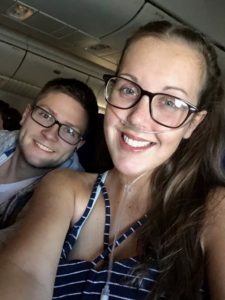
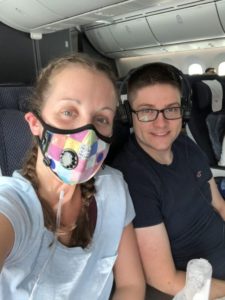
The most common allergy we see onboard are nut allergies, but the same rules apply for any passenger that informs us of an allergy during boarding. It is at this point that we explain that we cannot guarantee other passengers will comply with our request to avoid using such products onboard, however, we will remove said items from our trolly services where possible. We also have to remind passengers that the air on board is recycled, meaning passengers with airborne allergies are travelling at their own risk. In addition to this, we ask if they have their own medication/Epipen to use and if they are travelling with anybody else. Alternatively, we have an Epipen in our onboard medical kit that can be administered if needed, along with contacting Medlink when airborne in the event of an emergency.
Every aircraft has an onboard wheelchair that is designed to fit down the aisles and safely move passengers to and from the onboard toilet, etc. Due to safety reasons we obviously cannot assist with anything other than transportation, meaning passengers need to ensure they are travelling with someone who can support them in the toilet if required.
Every crew member has taken part in an intense training course that includes learning anything from treating a burn to delivering a baby! We are also First Aid trained and can deliver CPR, but we haven’t been to med school; meaning we rely on a helpline ran by medical professionals in Arizona called Medlink to provide us with step by step instructions, additional support and professional advice 24/7. We also have a medical kit onboard that contains various medications and treatments we can administer, along with items that can only be used by a healthcare professional. Therefore we will make a public announcement to ask if there is a Doctor onboard, but we must see proof of profession and organise written consent in order for them to assist.
Working animals such as Guide Dogs are allowed to travel in the cabin at no extra cost. All crew have recently been trained to better accommodate both the dog and their handler (as mentioned in question 2) and understand the importance of not touching, distracting or feeding the dog, along with not asking to stroke or photograph the dog. However, if required we can assist the handler with certain tasks such as holding the dogs lead whilst they transfer into their seat, or set up a mat for the dog to lie on.
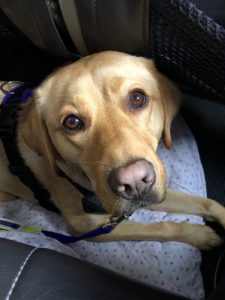
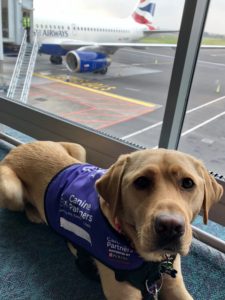
There are a variety of ways we can help passengers with vision impairment! For example, help finding their seat and familiarise them with the surrounding area; assistance when moving between their seat and the washroom; opening the packaging of their onboard meal, identifying the food and highlighting tray layout; providing essential flight safety information in a way that is most beneficial to the passenger, such as allowing them to touch the items used in the flight safety demo. As always, we encourage passengers to ask us if there is anything we can do to help and respect passengers who would prefer to be left alone.
As with any customer service job, I think there is always room for improvement, and I think listening to passenger feedback is the best way to achieve this. That being said, it is a pleasure to work for a company that continually strives to better accommodate passengers of all abilities onboard our aircrafts.

Thank you to the following companies for sponsoring this collection of blog posts! I will be sharing more information on each of the sponsors at the end of the series, but in the meantime you can click on the links below to learn more about their products and services:
Hi, I'm Lauren and I have been living with a collection of disabilities for the past 8 years. I initially had a passion for teaching children with special needs, but my health prevented me from pursuring my dream career. Despite this, I now love nothing more than sharing my experiences to help other people living with disabilities.
Hi, I’m Lori and was diagnosed with Ehlers Danlos Syndrome and a family of co-morbid conditions which has made life highly complex. However I constantly aim to make life as ‘normal’ and fulfilling as possible - and through this, I discovered the benefits of writing about my journey.
 GET IN TOUCH
GET IN TOUCH
